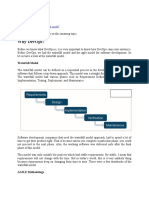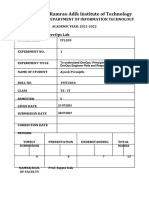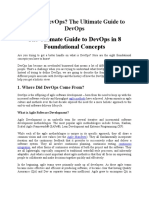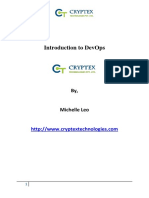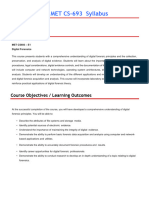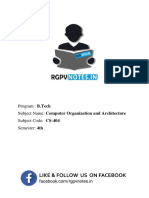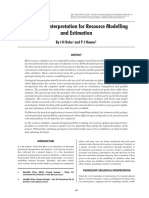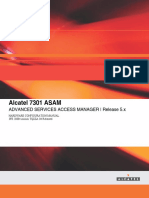0% found this document useful (0 votes)
42 views5 pagesDevOps Phases Cheat-Sheet
The document discusses the integration of DevOps within the Software Development Lifecycle (SDLC), emphasizing the importance of collaboration between development and operations teams to enhance efficiency and quality of software delivery. It outlines various phases of DevOps, including Continuous Business Planning, Collaborative Development, Continuous Testing, Continuous Release & Deployment, Continuous Monitoring, and Continuous Customer Feedback, along with the tools that support each phase. The paper also highlights the challenges organizations face in adopting DevOps and the significance of selecting appropriate tools for successful implementation.
Uploaded by
Shantanu MishraCopyright
© © All Rights Reserved
We take content rights seriously. If you suspect this is your content, claim it here.
Available Formats
Download as PDF, TXT or read online on Scribd
0% found this document useful (0 votes)
42 views5 pagesDevOps Phases Cheat-Sheet
The document discusses the integration of DevOps within the Software Development Lifecycle (SDLC), emphasizing the importance of collaboration between development and operations teams to enhance efficiency and quality of software delivery. It outlines various phases of DevOps, including Continuous Business Planning, Collaborative Development, Continuous Testing, Continuous Release & Deployment, Continuous Monitoring, and Continuous Customer Feedback, along with the tools that support each phase. The paper also highlights the challenges organizations face in adopting DevOps and the significance of selecting appropriate tools for successful implementation.
Uploaded by
Shantanu MishraCopyright
© © All Rights Reserved
We take content rights seriously. If you suspect this is your content, claim it here.
Available Formats
Download as PDF, TXT or read online on Scribd
/ 5








